I found the Oasis Electronic Focuser from Astroasis to be user-friendly during installation, and my initial tests have produced positive outcomes. This focuser seamlessly integrates with popular Astro software through ASCOM, allowing for effortless control, and can be controlled via smartphone. I evaluated both the coarse and fine focus options on celestial objects such as the sun and stars using Sharpcap, and I also employed the autofocus feature in Sequence Generator Pro with my Astro camera and filter wheel connected to the telescope. To my delight, every function worked flawlessly. My initial impression is that this electronic focuser is very stable and a great tool to capture sharp images of the sun, moon, planets, and deep-sky objects.
Achieving precise focus is crucial when capturing images of the night sky. The frustration of finding out that your telescope or camera is out of focus after an entire imaging session feels like a wasted effort—I can certainly relate to that. Fortunately, there are numerous tools and products available to assist us in achieving optimal focus. One particularly effective option is an electronic focuser. Initially, I was hesitant to invest in one, as I didn’t mind manually focusing my telescopes outdoors. However, the allure of being able to control the focus of my telescope from the comfort of my home, without the need to step outside, became increasingly appealing. Electronic focusers have been on the market for some time now, and Astroasis graciously reached out to me to test their new Oasis Focuser. Intrigued, I decided to give it a try.
Unboxing and installing
The package containing the Oasis Electronic Focuser arrived in excellent condition, securely enclosed within a protective black box with ample wrapping paper. Upon unboxing, I was surprised to find not one, but a total of nine boxes neatly arranged inside.
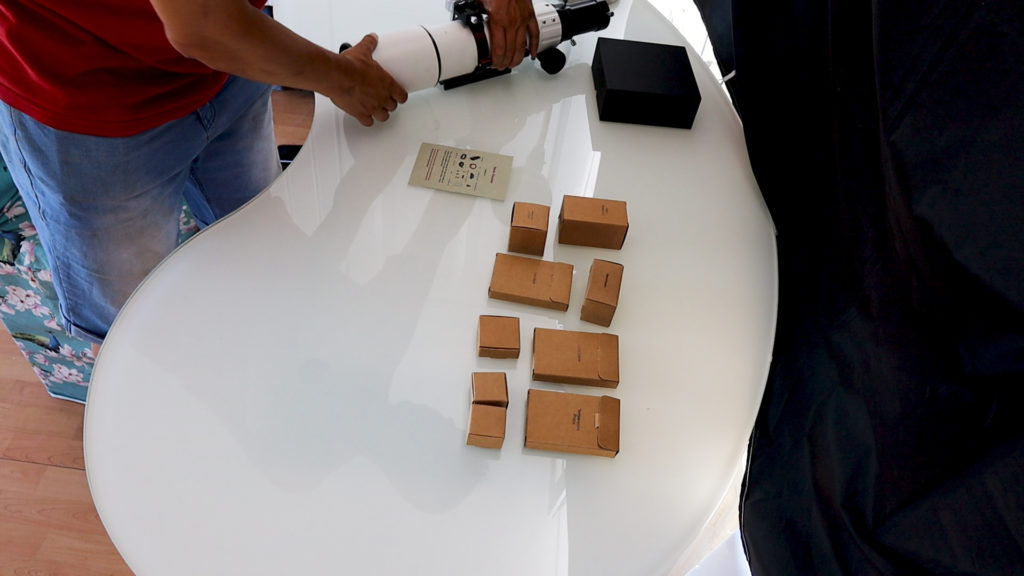
Although initially perplexed, I mustered the motivation to delve into each box and diligently read through the comprehensive installation manual. The manual provided detailed instructions for various installation options tailored for both refractor and Schmidt Cassegrain telescopes.
Once I embarked on the installation process, connecting the focuser to my refractor telescope turned out to be surprisingly straightforward. I had a manual dual focuser situated on one side of the telescope and a one-speed focuser on the other side. Within a mere 10 minutes, I successfully detached the wheel of the one-speed focuser and effortlessly replaced it with the Oasis Electronic Focuser. I proceeded to download and install the ASCOM driver directly from the astroasis website.
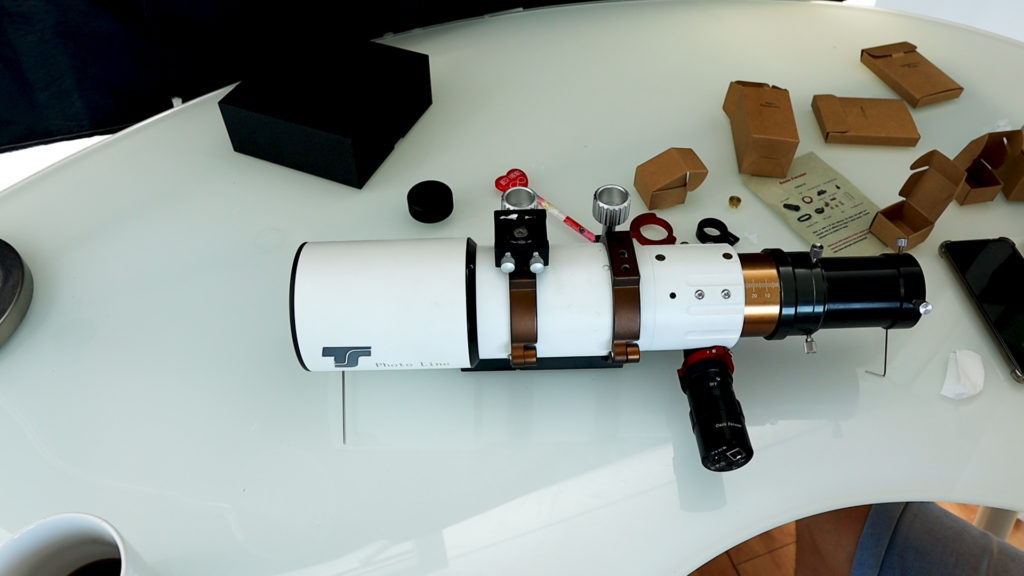
First test results
Following the successful installation of the Oasis focuser, I eagerly decided to put it to the test on a scorching June day when temperatures soared to approximately 30 degrees Celsius. My first experiment involved directing the telescope with the new Oasis focuser towards the Sun while taking all necessary precautions, including the use of a certified solar protection filter from Baader to safeguard my telescope.

To streamline the control process, I connected the Oasis focuser to a mini-PC responsible for managing my mount, focuser, and camera. From the comfort of my home, I used my personal computer to establish a connection with the mini-PC through my home WiFi network. The entire setup worked seamlessly.
By accessing the hardware settings in SharpCap, I effortlessly connected to the Oasis focuser ASCOM driver. As a result, a new interface box dedicated to the Oasis focuser materialized on my screen. Engaging with the focuser was a breeze—I simply had to click the checkbox to establish a connection. SharpCap granted me the capability to perform both coarse and fine adjustments by utilizing the readily available up and down buttons. Furthermore, SharpCap allowed me to customize the step size for both coarse and fine focus settings, providing enhanced control over the process.
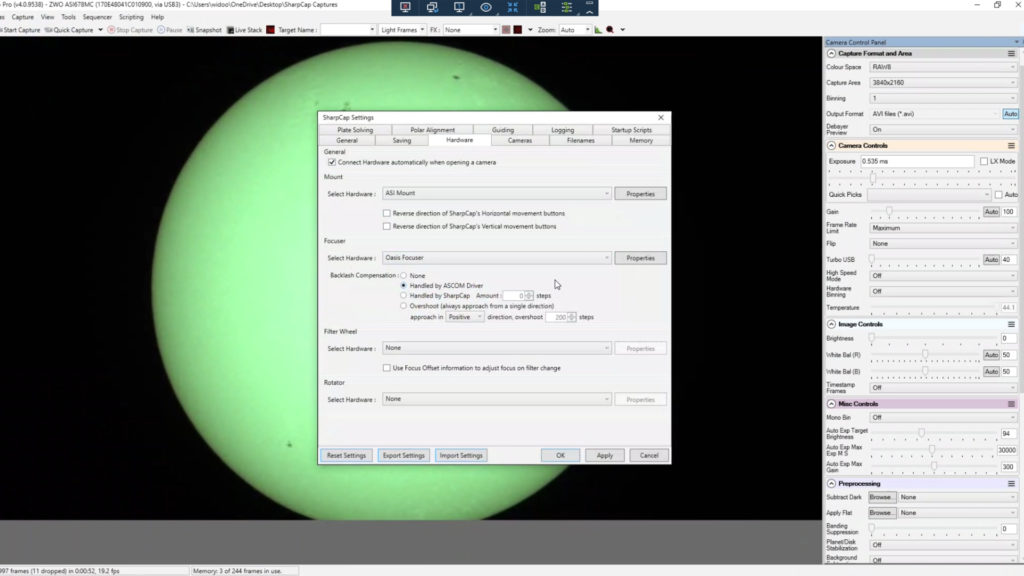

Upon experimentation, I discovered that the default settings of 2000 steps for coarse focus and 200 steps for fine focus proved to be effective. The reliability of the focuser became evident as I was able to achieve precise focus by clicking an equal number of steps to adjust the telescope’s inward or outward focus. This functionality served me well when capturing images of the active sunspots present on that particular day.
However, it is essential to note that atmospheric turbulence can introduce challenges during the focusing process. When utilizing the Oasis focuser in conjunction with my Daystar Quark Chromosphere, which extended the telescope’s focal length to approximately 2000mm, I observed a considerable amount of atmospheric turbulence. This turbulence makes it more difficult to attain the optimal focus. It is crucial to understand that this atmospheric interference is not indicative of any shortcomings in the quality of the Oasis Electronic Focuser. Rather, it is a factor directly influenced by the prevailing seeing conditions on a given day.
Once darkness descended, I proceeded to test the Oasis focuser’s performance in focusing on stars using my ASI2600MM Pro camera and filter wheel affixed to the telescope. The results were commendable, as the focuser effectively achieved precise focus on the stars. Additionally, I established a connection between the Oasis focuser and Sequence Generator Pro, enabling me to conduct an autofocus procedure.

For the autofocus process, I opted for 10-second exposures with a step size of approximately 150 steps. This choice resulted in a relatively high HFR (Half Flux Radius), indicating that it may be possible to achieve autofocus with shorter exposures. Notably, Sequence Generator Pro consistently executed the autofocus procedure with an impressive accuracy rate of 98% across multiple attempts. Note that I forgot to set a value for backlash compensation in SGP, resulting in this curved line. I still achieved good focus, but setting a value for backlash will improve the autofocusing process. The vendor also explained that for most telescopes, when the Oasis Focuser is installed on the coarse-tuning knob, each motor step moves less than 1μm focuser distance. If you compare that to the popular ZWO EAF, a 5 steps movement of Oasis focuser approximately equals to 1 step improvement of the ZWO EAF. For DSO auto-focusing, each auto-focusing step should move the focuser about 0.1mm. So for the Oasis Focuser, 100~150 motor step size for one auto-focusing is a suitable value.
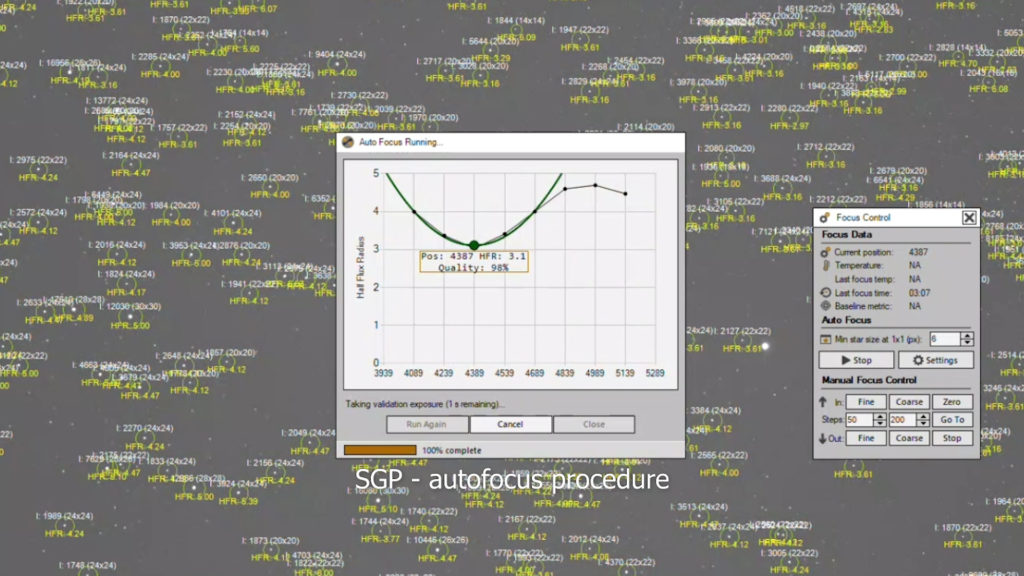
To further evaluate the Oasis focuser, I captured a 5-minute test shot of the North America and Pelican nebula. The stars exhibited remarkable pinpoint precision in the image. Moving forward, I plan to continue testing the focuser extensively over the next few months. I will provide updates on my experiences with the focuser in this blog.
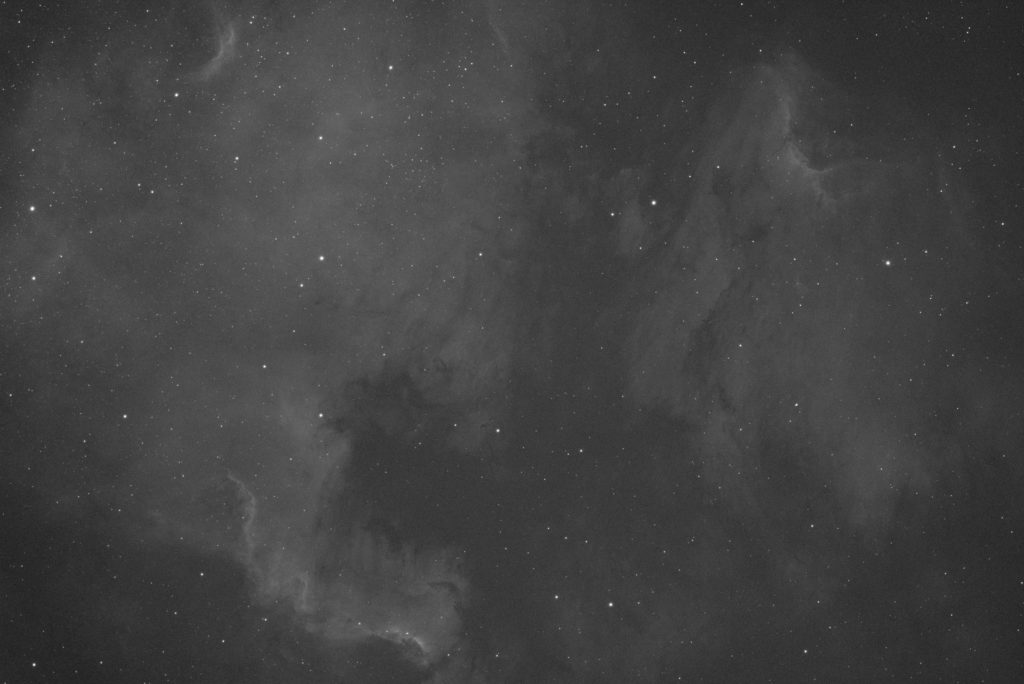
I would like to express my heartfelt gratitude to Astroasis for generously providing me with the Oasis focuser with no obligations attached.
Clear skies!
Wido. Find out more about me here.